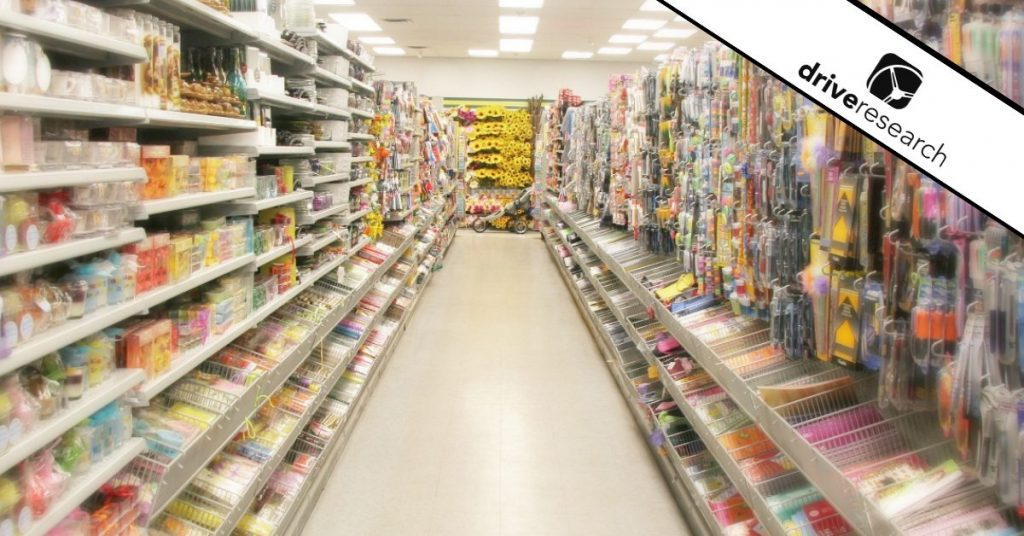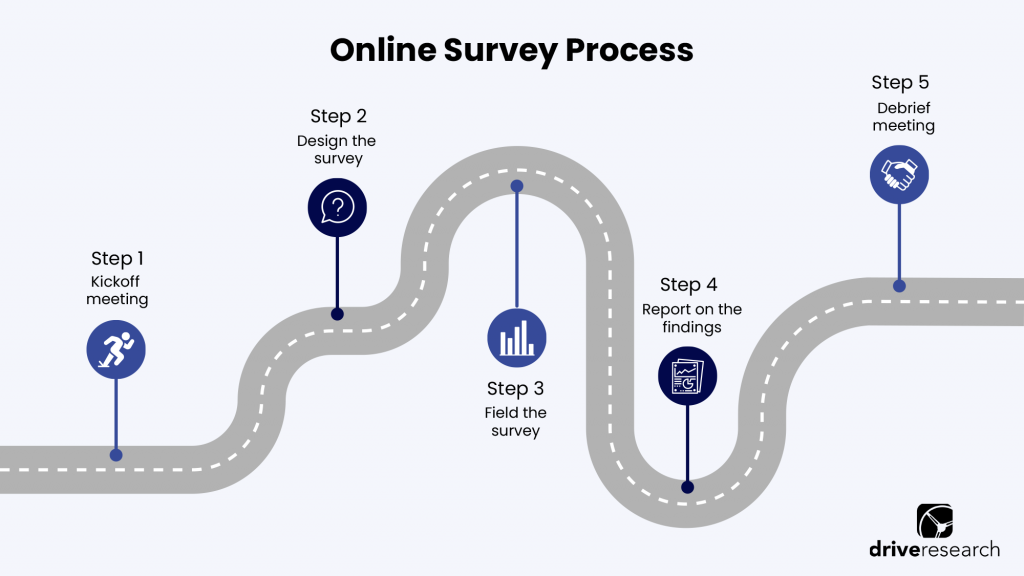
Whether you’re a seasoned business owner or just starting out, conducting store surveys can be a game-changer in understanding customer satisfaction, preferences, and areas for improvement. In this post, our retail market research company will walk you through the ins and outs of store surveys, highlight their many benefits for retail businesses, and even provide you with some example questions to kickstart your survey journey.
What are store surveys?
Store surveys are structured questionnaires or feedback forms designed to gather information directly from customers about their experiences, preferences, and satisfaction levels related to a specific retail store or chain.
These surveys are typically conducted either in-store, online, or through other channels like email or mobile apps. They cover various aspects of the shopping experience, such as product selection, pricing, customer service, cleanliness, and overall atmosphere.
What is the purpose of store surveys?
The primary goal of store surveys is to collect valuable insights that help businesses understand their customers’ needs and preferences better.
By analyzing survey responses, businesses can identify areas of strength and areas needing improvement, make informed decisions to enhance the shopping experience, and ultimately build stronger customer relationships.
Store surveys also provide an opportunity for customers to voice their opinions, concerns, and suggestions, fostering a sense of engagement and loyalty.
Goals and objectives for store surveys often include:
- Measuring satisfaction with the establishment
- Satisfaction with specific factors of the establishment
- Amount purchased if applicable
- Identifying the average amount purchased at competitor establishments
- Identifying the average number of visits to an establishment
- Feedback regarding the experience
Overall, store surveys serve as a vital tool for businesses to gather actionable feedback, improve retail marketing and operations, and ultimately deliver a more satisfying shopping experience for their customers.
What are the benefits of in-store surveys?
The most important benefit of in-store intercept surveys is that it collects in the moment feedback.
Essentially, this means accuracy is on point. This means collecting information about satisfaction, likelihood to recommend, preferences, and behaviors will be as accurate as possible.
Additionally, gathering high data quality is a huge benefit to in-store intercept surveys.
To garner the best results and benefit from this type of research, the intercept survey should take less than 3 minutes to complete and include up to 15 questions.
Also, if the goal is to collect a specific number of responses, if traffic is lower it will be more expensive to have staff available for more days.
How to conduct store surveys
As we’ve discussed, store surveys are a method used by businesses to collect feedback and insights from their customers regarding their experiences at a particular retail store.
Used to collect essential information about the customer experience, these surveys are an ideal market research option for retail brands wanting to increase sales.
To navigate this process correctly, certain steps must be followed…

Step 1. Survey creation
First off, the store in question will create a survey with a set of specific questions. These questions should be specific to the current needs of the store to gather the best data.
The top goal for every store survey (no matter the industry) will be to better understand their customers. As a result, the questions included will cover the following key topics…
- Customer service
- Product availability
- Store layout/design
- Cleanliness
- General satisfaction
Step 2. Survey distribution
Once designed, the surveys are ready to be sent out. It’s pretty simple: surveys can be sent out online or done in person.
In-Person
Store staff will either hand out survey cards for shoppers to complete or approach them with a digital option. This typically includes a tablet or mobile device before they exit.
Online
In this case, customers will get an email or text invite to participate in the survey online. Usually, this includes a survey link hosted by the store’s website or a third-party survey platform.
Step 3. Survey completion
Now it’s time for feedback! Customers will complete their survey online, or if in-person, this can be done at a table or kiosk.
How long should these store surveys take? Not long.
The longer the survey, the higher the chance customers won’t want to take it. Aim for three minutes, as this is short enough for the customer to quickly answer while also providing thoughtful feedback.
Anything over 10 minutes is a big no-no.
Step 4. Data collection
After the surveys are completed, the data will be collected for analysis.
While this can be done manually, we suggest using software that quickly organizes the feedback. This saves time and will also ensure the data is gathered properly.
Step 5. Data analysis
Once the data is collected and organized, it can be analyzed.
All this means is that the research team will look for certain patterns, trends, and themes that pop up in the customer’s feedback.
This is perhaps one of the most important aspects of the research process. It’s at this point that the research team will determine the key areas of improvement based on the store survey’s findings.
Step 5. Feedback integration
Based on what the survey revealed, the store in question can make changes if needed.
Since this is specific to each store, changes vary. However, common improvements can include…
- Customer service training adjustments
- Restocking certain products
- Store layout changes
Step 6. Reporting and feedback loop
Often, a summary of the data will be included in a market research report. This information is designed to be seen by leadership teams and/or stakeholders and can aid in decision-making.
Depending on the project, customers may even get updates on how their feedback is being used to improve the store’s services.
Step 7. Continual improvement
Customer satisfaction isn’t a one-and-done feat.
It’s making continual improvements to the store to ensure customers stay happy in the long run.
We often suggest running store surveys on a regular or semi-regular basis. This ensures leadership and other relevant teams are getting updated feedback on their services.
At the end of the day, all of this is to ensure customers stay with a brand. These store surveys play a pivotal role in that, as they provide feedback straight from the customers.
From there, changes can be continuously made to boost customer loyalty and related metrics.
Who should conduct in-store surveys?
One of the most critical pieces to conducting in-store intercept surveys is having the right team.
The top three qualities to look for in an intercept survey company include:
- Attention to detail
- Approachability
- Extroverted personalities
An intercept interviewer will be tasked with collecting high-quality data from as many people as possible.
Therefore it is important participants feel as comfortable and welcoming as possible.
Companies executing in-store intercept surveys can do so in-house or with a third-party market research company.
If you are still weighing your options, I suggest reading our blog post, Market Research: Is In-House or Outsourced.
While Drive Research always weighs on the side of hiring a professional in-store intercept survey firm, we know this is not always possible.
For this reason, I’ll share five quick tips for managing an interview team in the next section.
Tips for managing an in-store survey interview team
1. Host training sessions
Hold an in-depth training session with the interviewers.
This should cover dress code, details about where to be and when, training on technology (as needed), reviewing the survey, and reviewing how to approach customers.
2. Clearly state how interviewers should interact with respondents
Coach the interviewers on how to approach customers.
It’s important to give interviewers a suggested script and ensure they feel comfortable with it.
Ultimately, their job is to entice customers to complete the survey.
3. Find high traffic areas
The more people who interviews can pitch the survey to will make completing fieldwork a more straightforward process.
If the place where the intercept surveys are being conducted does not have enough traffic, there will be fewer surveys collected or more expensive to complete fieldwork.
4. Disperse or Move Interviewers Around
Each intercept location will have its quirks.
There will likely be a place with the highest traffic, but that does not always mean it will get the best return.
For example, maybe people are more in a hurry when they leave the store, so it’s better to be placed in the back of the store when customers are still shopping.
Think about mixing the locations for interviewers up.
5. Don’t Be Afraid to Take a Break
Intercept interviewers will be talking and approaching people a lot. It’s important to stay fresh and take a break during the day to recuperate.
Interested in learning more intercept survey tips? Watch this 60-second video.
Examples store survey questions
Ultimately, the questions asked in an in-store intercept survey depend on the goals and objectives of the study.
Here are a few examples of questions that could be included in a store survey:
- On a scale of 1 to 10, how would you rate your overall satisfaction with your recent shopping experience at [Store Name]?
- How likely are you to recommend [Store Name] to a friend or family member?
- How would you rate the cleanliness and organization of the store?
- Were you able to easily find the products you were looking for?
- Did you find the staff helpful and knowledgeable?
- How satisfied were you with the checkout process (wait time, efficiency, friendliness of cashier)?
- Did you encounter any issues or challenges during your visit? If yes, please specify.
- How would you rate the quality and variety of products available at [Store Name]?
- Did you feel that the prices at [Store Name] were reasonable for the products offered?
- Did you take advantage of any promotions or discounts during your visit?
- How often do you typically shop at [Store Name]?
- What could [Store Name] do to improve your shopping experience in the future?
- Would you like to receive updates and promotions from [Store Name]? If yes, please provide your email address.
- How satisfied are you with the layout and organization of the store?
- Did you experience any issues with parking or accessibility to the store?
Though, keep in mind, when working with an online survey company, these questionnaires can be customized entirely to the needs of a specific store.
Frequently Asked Questions About Store Surveys
What is a store survey?
A store survey gathers feedback from customers to improve various services. More specifically, this feedback can be used to improve how the store operates on a daily basis and the effect those operations have on shoppers. As a result, these surveys often boost customer loyalty and retention rates.
How do you survey a retail store?
To conduct an online survey for a retail store, create a questionnaire with relevant questions about the online shopping experience, product selection, customer service, and satisfaction levels, then distribute it through email newsletters, social media platforms, or the store’s website to gather feedback from customers for analysis and improvement purposes.
What are good intercept survey questions to ask customers in retail?
Survey questions vary depending on the needs of the store. Once key objectives are determined, questions can be tailored to gather the best feedback.
Common points included in questions:
- Customer service options
- Purchasing/checkout details
- Product/service quality
Contact Us to Conduct Store Surveys
Drive Research is a national market research firm. Our team of market research professionals partners with brands across the country to execute in-store surveys.
From survey design to survey interviews to reporting, Drive Research offers end-to-end project management services.
Need a quote for an in-store survey project? Contact Drive Research below.



